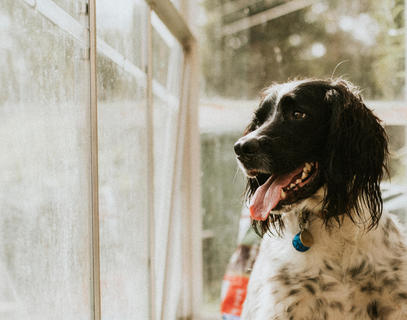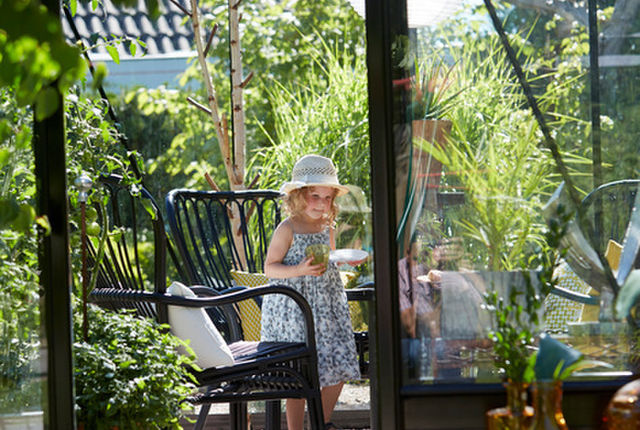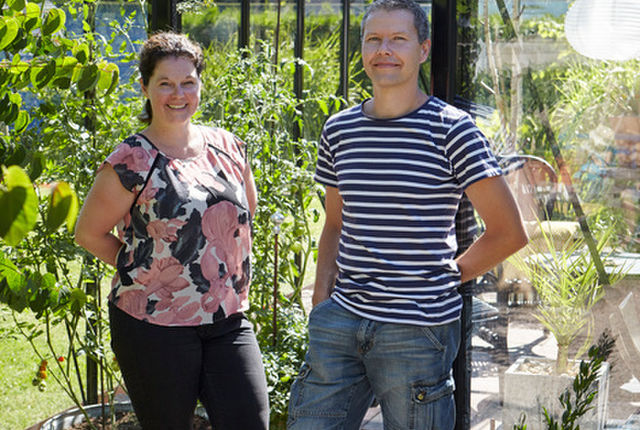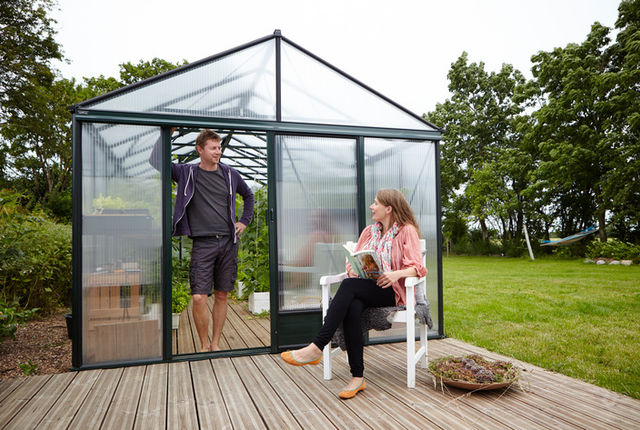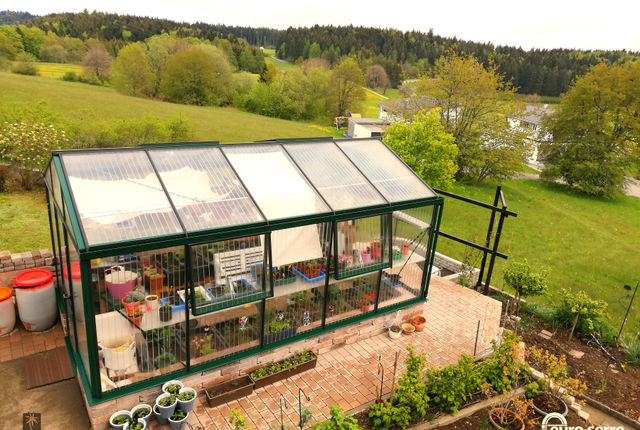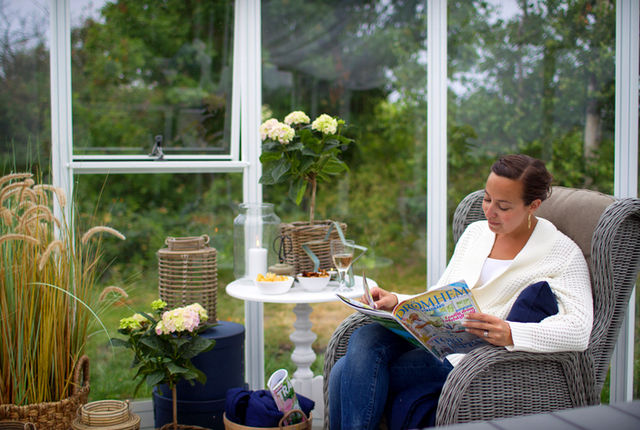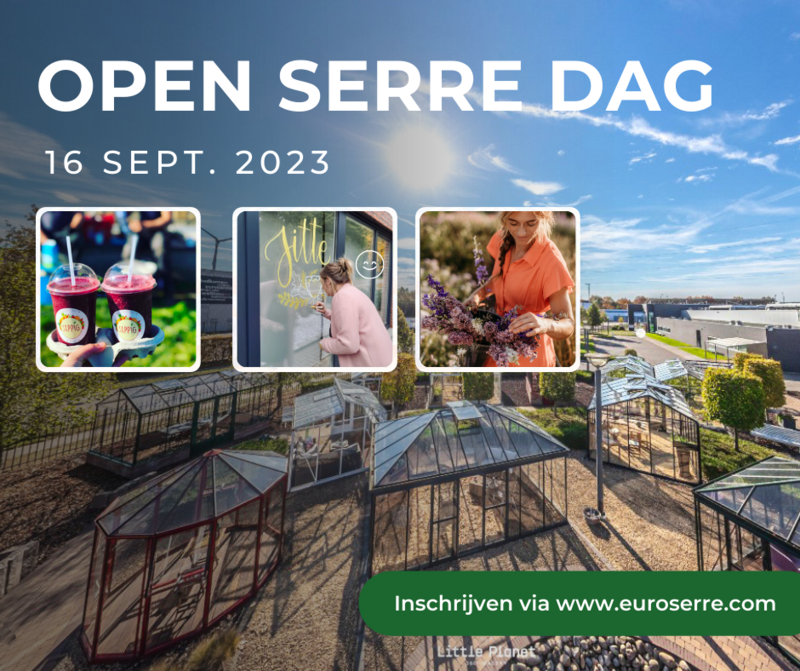Which type of glass should I choose for my greenhouse or conservatory?
A glass greenhouse or conservatory is timeless, doesn't degrade, and is easy to clean. So glass is an obvious choice, but which type? Choosing the right glass is a not so simple, because there are several options. Is light penetration the most important factor for you? Or the level of insulation? And don't forget the aesthetic aspect in your garden. In this article we will list the pros and cons, and offer help with your choice.
Float glass
In view of its high-quality properties, good insulation and light permeability, float glass is the norm in the greenhouse and conservatory world. So, this is the way to go for most hobby gardeners, because this type of glazing allows you and your crops to enjoy the warmth and sunlight optimally. As standard, we supply your Euro-Serre model with 4-mm clear float glass sheets. The large glass sheets are created in a unique way: During the production process, when the molten glass reaches a temperature of about 1,500°C, it is poured onto a layer of tin. The glass is lighter than tin and therefore keeps floating on top. The glass is then cooled down, and leaves the furnace in its solid form. This makes the end product very strong, perfectly flat and equally thick everywhere. And float glass guarantees high-quality glazing with storm resistance, especially when compared to regular horticultural glass. Please note that both float and horticultural glass break into sharp shards in the event of breakage, so be extra careful with children and pets.
Horticultural glass
Horticultural glass is a cheaper and less strong variant that some glasshouse builders still use. Compared to float glass, horticultural glass is heavy, more fragile and its thickness is uneven in places. And this type of glass has pull stripes from the method of manufacture, which means that you would not have the quality finish we want to guarantee. This why Euro-Serre does not offer horticultural glass.
Safety glass (hardened glass)
Safety glass or tempered float glass is, without doubt, the safest choice. It has all the good properties of ‘plain’ float glass and is actually five times as strong under certain conditions, e.g. fiercely stormy weather. The glass is subjected to controlled thermal treatment, which changes its structure and prevents shards forming in the event of breakage. This brings us to the main advantage of safety glass – if it breaks, it breaks ‘safely’. It falls apart in thousands of small crumbs of glass with flattened edges, and not in shards, as float glass does. And these small pieces cannot really cause injuries. So, it is no wonder that public institutions such as health-care farms, hospitals or schools often opt for safety glass.
In almost all cases, we personally recommend the ordinary float glass – a suitable quality for everyday use, and with very good resistance to European weather conditions. Safety glass is only available on request and at additional cost. The tempered float glass we offer for our greenhouses, conservatories, verandas and orangeries is 4 mm thick.
Thermopane glass
The sides of our Tropic models consist of 14 mm thermopane glass. Thermopane glass is actually a chic name for double glazing, with the same properties and characteristics. Thermopane glass comprises 3 layers: 4 mm float glass - 6 mm argon gas - 4 mm float glass. The space between these two glass layers is therefore filled with gas to retain the warm air even better. The excellent insulation that this creates is a characteristic of our Tropic models of greenhouses and conservatories.
Polycarbonate
Polycarbonate is an interesting alternative to glass. Do you want to use your greenhouse or conservatory as a winter garden? Or perhaps you want to overwinter frost sensitive plants such as cacti? This will require additional heat and insulation. Plastic sheets such as polycarbonate offer a solution here. These sheets have layers with air between them, and that reduces the energy loss when you heat your greenhouse or conservatory. And the plastic is unbreakable, strong, elastic and light. So, it is easy to install.
You should be aware that insulating (clear) polycarbonate does not allow as much light penetration as float glass. About 75 percent of the sunlight penetrates into the greenhouse or conservatory. That is a lot less than float glass, which allows about 90% penetration.
If you opt for opal (milk white) polycarbonate, instead of clear, only 65 percent of sunlight will penetrate. And besides that, the plastic is not entirely transparent. So, you can only truly admire the bright blue sky from your greenhouse or conservatory if it has a glass roof. But opal polycarbonate on the roof can be useful. For example, it's great if you want to keep your conservatory or veranda on the south side warm, while still having some shielding from burning sunshine. Tropical plants love that extra insulation. And maybe you too? In this case, we advise you to use polycarbonate sheets on the roof.
We can supply most of our models with 8 mm polycarbonate roofs, on request. We then provide extra 8-mm profiles, into which the sheets will slide smoothly. Would you like it just a bit warmer? If so, take a look at our Tropic range. We supply these models with 16-mm polycarbonate roofs, as standard, and you can even have polycarbonate side walls on request. The big advantage – the soft sunlight and the high insulation value help your (tropical) plants through the cold days and extend the growing season in the greenhouse or conservatory. Of course, choosing glass or plastic is also a matter of personal taste.
Not found what you are looking for?
Other types of glass or combinations of different ones and polycarbonate are also possible, but only on request. So, don't hesitate to ask us.
